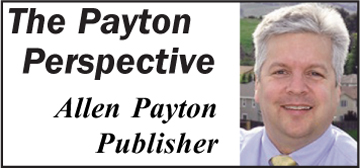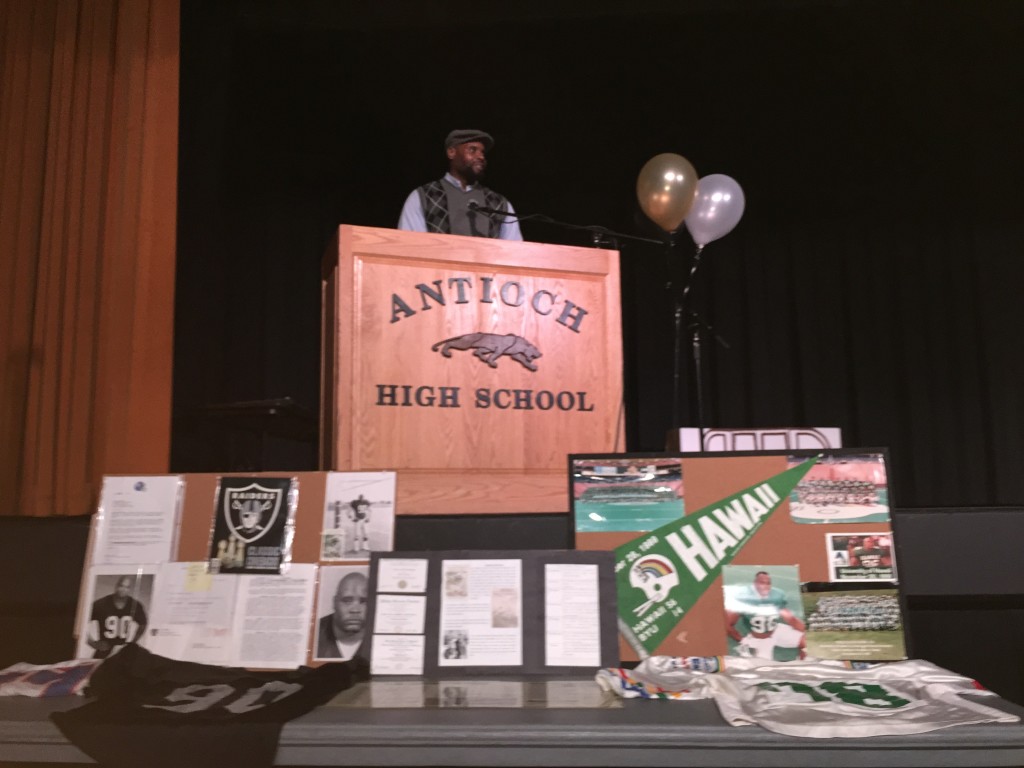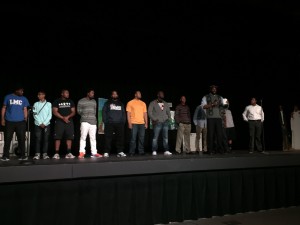By John Crowder
At the January 13, 2015 meeting of the Antioch City Council, members of the public spoke about a proposed card room ordinance and the feral cat situation, while Mayor Pro Tem Lori Ogorchock pushed for a future agenda item to discuss the hiring of Community Service Officers (CSO’s).
Card rooms
Stemming from direction given by the city council at a meeting last November, a proposed card room ordinance was presented by city staff. The proposed ordinance called for limiting the number of card rooms in Antioch to two, and requiring applicants desiring to operate a card room in Antioch to obtain a State Card Room License prior to the council considering such a request.
Also included in the staff report was a five-point letter received by the city on December 10, 2014, in which 30 prominent Antioch residents requested the council consider, “several options for strengthening our card room ordinance.” These included the following:
-
Asking voters about new licenses and any expansion of gambling
-
Consider what games are allowed and how many tables
-
The location of gambling
-
The process by which a license to conduct gambling is obtained
-
Providing the police department with enforcement tools
Steve Scudero, representing the card room 19th Hole, noted that the state allowed them to expand from 6 to 8 tables with the approval of the council. He requested that a vote of the people not be required for such a “minor” change. He noted that he and his two partners were in their 31st year of ownership of the 19th Hole, and that, over the last 30 years, they had raised over $1.5 million for local charities.
Following Scudero’s comments, council member Mary Rocha immediately moved to accept the staff recommendation for the proposed ordinance. During discussion by the council, Mayor Wade Harper asked city attorney Lynn Tracy Nerland if the council would be able to “come back with some stronger language,” as referenced in the December 10 letter, if they were to approve the motion put forward by Rocha. Harper also emphasized that, “I don’t want to have any negative impact on the 19th Hole.” Even so, Harper said, “I want to limit the card rooms from being within a certain [number of] feet of churches, schools, day cares, that type of thing.” Nerland recommended they approve the currently proposed ordinance, and come back with additional proposals at a later date. Following further discussion, the motion to approve the ordinance, as presented by city staff, was passed on a 5-0 vote. After the vote, staff was directed to bring back language that would restrict where card rooms would be placed, while ensuring that the 19th Hole would not be negatively impacted by such a revision.
Feral cats
Also at the meeting, the council received an animal services update, focusing on the ordinance banning the feeding of feral cats except on one’s own private property. The update began with Antioch Police Chief Alan Cantando introducing Lieutenant Tony Morefield, currently managing Animal Services, and providing background. Cantando noted that the council had directed, several months ago, that staff meet with animal rights advocates concerned about the ordinance. Cantando thanked all who participated in the meetings, and noted the passion with which participants advocated for their cause.
Morefield started his presentation by stating that an ordinance was passed by the council in April of last year prohibiting the feeding of feral cats on other than someone’s own property. He said that, at that time, the council had directed staff to meet with groups conducting Trap, Neuter, and Release (TNR) programs, to see how such programs could be continued “under provisions” of the ordinance. He noted that several meetings had taken place.
Morefield summarized his written report by saying, “We did discuss a number of topics surrounding the issue of feral cats, but unfortunately, we were not able to come to a consensus on how to proceed.” He went on to say, “Essentially, these groups have made it clear to staff that they are in opposition to the ordinance.” Morefield continued, “Furthermore…it has become clear to staff that the advocate groups do not agree with the ordinance, nor are they wanting to conform to it. On the contrary, over these months, permanent cat feeding structures have been erected and subsequently removed, the regular feeding of feral cats continues…the blight of feeding feral cats is evident all over the downtown area, and ultimately, the feral cat population in Antioch persists.”
Following Morefield’s remarks, council member Tony Tiscareno, who said that he had been in attendance and observed one of the meetings between the feral cat advocates and city staff, asked if there had been any advocacy groups willing to work with the city within the confines of the ordinance. Morefield said that there was no site outside public lands that the advocacy groups found acceptable as a place to feed the animals.
During public comments, most speakers expressed opposition to the ordinance banning the feeding of feral cats. They focused on two main points, removing the ban on feeding and directing police resources to other areas.
Typical of the comments were those expressed by Karen Kops, President of Homeless Animals Response Program (HARP), who said, “A feeding ban and TNR is not compatible.” “We’re asking that the feeding ban of feral cats be repealed.” “Please do not spend any more money to impede the work of volunteers.”
With respect to allocation of police resources, Leslie Ward, among several others, said that Antioch should focus on its crime problem, including the numerous shootings that have taken place in the city, and not on feral cats.
Some of the speakers, though, did support the ordinance banning the feeding of the feral cats. Fred Hoskins said, “There’s a big ballyhoo again,” and that, “we’re going in circles.” He said these, “concerned citizens” should implement a, “Trap, Neuter, and Take Home” program. “Our city needs no more blight,” he said.
Paul Shore commended the council for adopting the ordinance, and for giving the feral cat advocates six months of discussions. Shore emphasized the number of birds killed each year by feral cats. He said, “It has been proven, TNR does not work in controlling feral cat predation.” “Well-fed cats are also predators. Even though they’re fed, that does not diminish their desire to hunt and kill,” he said. “Putting feeding stations is going to promote more cats in that area, and especially along the waterfront, it’s going to impact the birds. I strongly urge you to implement the ban.”
Lisa Kirk, of the Homeless Animal Lifeline Organization (HALO), brought up another issues. She said, “You do have 20,000 feral cats,” but the ordinance prevents the city from obtaining grants to deal with them.
Following the public comments, City Manager Steve Duran said, “I think the intent in the six months, which ended up being more than that, was to try to, within the context of the ordinance which was passed by the council, after much review, and much research and much testimony…the intent was to try and work within the contents of this ordinance to find a TNR group that would be willing to work with the city in that context.” “We felt that there could be a way to work with the most reasonable we could find of these groups to establish a certain number of feeding stations so the cats could be trapped. I think the problem in the whole thing is, what caused the problem in the first place, that led to the ordinance, is unfettered feeding of cats, along our very environmentally sensitive waterfront where there are species that cats naturally would hunt, not to mention the feces and the cleanup of the cat food and things like that. The problem is also…with rogue feeders.” He also said that the feral cat advocates drew, “a line in the sand,” taking the stand that the city must repeal the ordinance. Duran said there was hope to get something done, but not if people just “dig in their heels” on the ordinance, which he characterized as illogical, as it would lead to people “feeding cats anywhere, anytime,” and said there are currently people who just dump food for the cats in the middle of the street. “It’s irrational to think that if you just have, unfettered, no rules, that somehow it’s gonna make it better.”
Following Duran’s statement, Rocha, clearly frustrated, called for a neutral person to intercede, saying, “I think you need a mediator.” “We can’t continue to do this,” she said.
Rocha also said that she wanted to see HALO’s Lisa Kirk involved in any further meetings.
Following council discussion, the council agreed, on a 5-0 vote, to direct Duran to continue the dialogue with the respective TNR organizations, to include Lisa Kirk, and report back in three months.
Community Service Officers
During council comments, Ogorchock raised the topic of hiring additional CSO’s. She said that the elimination of furlough Friday’s had been proposed to be funded by Measure O at a council meeting in September of last year. With this now being funded by additional property taxes, that freed up about $440,000 which could be put toward the hiring of CSO’s. She stated that she wanted to see this added to the agenda at the next council meeting.
Following her statement, however, Harper began to comment, but then Duran, “through the mayor” said, that the council needs to agree to put something on the agenda. Harper then said, “it takes at least three of us to agree,” before an item can be placed on an upcoming agenda. “They have to have the council’s consensus and direction,” he said.
The next city council meeting is scheduled for Tuesday, January 27. Council meetings are held at the council chambers at City Hall, 200 H Street. The meetings begin at 7:00 p.m. They can also be viewed live stream online at www.ci.antioch.ca.us.




























